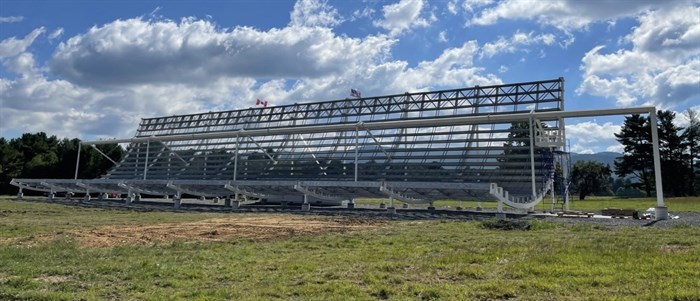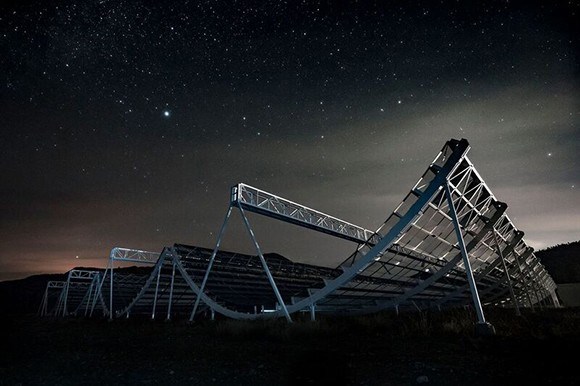
The Canadian Hydrogen Intensity Mapping Experiment.
Image Credit: FACEBOOK/CHIMExperiment
November 04, 2022 - 6:00 AM
A team of researchers who are trying to figure out the nature of reality through a telescope in the South Okanagan won an award that came with a quarter-million-dollar grant.
The Canadian Hydrogen Intensity Mapping Experiment – or CHIME for short – was built in the hills to the southeast of Penticton to study the history of the universe, the nature of distant stars and the detection of gravitational waves.
It became functional in 2017, and operates at the Dominion Radio Astrophysical Observatory which opened in 1960.
CHIME was recently awarded the Brockhouse Canada Prize for Interdisciplinary Research in Science and Engineering by the Natural Sciences and Engineering Research Council of Canada.
"Unlike traditional telescopes that mechanically point to and observe a small region of the sky, this revolutionary technology forms an image of the entire overhead sky each day by digitally processing the information received on a compact array of 2048 radio receivers as the Earth rotates," according to the awarding body.
And now, thanks to a grant that came with the award, the team of researchers have an extra $250,000 to work with.
Funding for scientific endeavours often comes with strings attached – but CHIME’s team of researchers are free to use this money at their discretion.
“It allows you to do something inventive,” said Dr. Mark Halpern, a professor from the department of physics and astronomy at the University of British Columbia.
“This allows us to think of a new idea and try it – it gives us the freedom to take a chance.”
CHIME was built for the primary purpose of mapping the history of the universe’s expansion rate.
READ MORE: CHIME telescope in South Okanagan helps pinpoint location of space phenomena
Halpern described it as a telescope that looks like a halfpipe for skateboarders.
The instrument glimpses deep into space to measure hydrogen gas within distant galaxies that were very strongly affected by dark energy. It’s measuring spherical shells called Baryon Acoustic Oscillations which were set in motion as early as 400,000 years after the Big Bang.
“These shells are huge now – they can contain a million galaxies each,” he said.
Those spheres continued in motion for the past 13 billion years, and now provide scientists with a “standard ruler to measure the expansion rate” of the universe, according to the CHIME website.
“It’s a complete gift to us,” Halpern said.
The digital imaging is processed by “truckloads” of computers on site. But even after five years of collecting data, he said the experiment is not yet complete.
Although CHIME was built to analyze the universe’s rate of expansion, its design also makes it a useful instrument for two other important uses – detecting fast radio bursts and measuring pulsars.

Image Credit: SUBMITTED/canada.ca
To contact a reporter for this story, email Dan Walton or call 250-488-3065 or email the editor. You can also submit photos, videos or news tips to the newsroom and be entered to win a monthly prize draw.
We welcome your comments and opinions on our stories but play nice. We won't censor or delete comments unless they contain off-topic statements or links, unnecessary vulgarity, false facts, spam or obviously fake profiles. If you have any concerns about what you see in comments, email the editor in the link above.
News from © iNFOnews, 2022